Risk to your brand. It’s probably something that’s on every marketer’s mind almost every day. Nobody wants to be “that” next company to find itself surrounded by controversy after launching a new product, ad-campaign, or brand partnership. But how many are taking the time to assess the probability of brand risk before going forward with one of those? Every time I see a brand embroiled in a controversy, I ask myself, ‘Did they test this out ahead of time?’
Take Bud Light for instance. Over the past few months, we’ve witnessed what I can only imagine will be fascinating business school case study for years to come.
In April, looking to expand its brand reach, Bud Light launched a partnership with Dylan Mulvaney, a transgender social media influencer. This partnership resulted in immediate social media backlash and calls for a boycott of Bud Light/ Anheuser-Busch from some consumers. AB failed to respond to the controversy for nearly 2 weeks, and when it did, it issued a statement that failed to appease those calling for the boycott, as well as the new market it was trying to reach by partnering with Mulvaney in the first place. The backlash has been severe and has had a real impact on AB InBev’s bottom line throughout the spring and summer.
I can’t help but wonder if they researched potential risks to their brand before venturing into this new marketing partnership? The backlash, and the relative surprise and lack of direction that AB seemed to react with, would lead me to guess they did not. Brand risk research could have informed them of the likely outcomes, allowing them to be more prepared with a plan to respond and minimize the impact to their brand, or even consider changing course on the strategy if they deemed the risk to their brand to be too great.
Understanding potential risk matters regardless of industry but is of even greater importance in the consumer facing retail/E-commerce space, where one wrong move can spell disaster. Social media outrage is one thing, but when consumers change their behaviors as a result of a brand’s actions, that impacts the bottom line. For Bud Light, that impact has been an estimated 25% drop in market share this past spring, with its parent AB InBev reporting a $400 Million decline in North American revenue for Q2 2023.
The Bottom Line: Conducting a little research to understand and quantify potential risks can save a brand from a lot of future headaches and potential monetary losses. As Warren Buffett said: “It takes 20 years to build a reputation and 5 minutes to ruin it.”
Dig Deeper
So what is brand risk research?
While it seems similar to ad-testing research, assessing brand risk is quite different in the insights it provides prior to launching a go-to-market campaign. It allows a business to understand potential reactions and any risk to their brand:
- How their existing core-customers most likely will react
- How any new target audiences might react
These reactions could vary from nothing, to limited social media reaction, to consumers changing their purchase behavior in a way that will impact your product(s) and your bottom line.
The exact approach varies depending on the product or situation. You can talk to your current customers, a new target group, or just a representative market view – all of these can help you understand how the market will likely react and whether you need to reconsider or can move forward.
When should it be used?
Assessing risk should be done anytime a business is making a shift that might cause an adverse reaction from a portion of the market, including:
- Releasing a new ad campaign
- Starting a new brand partnership
- Launching a new product
- Expanding into a new brand/line of business
Things to consider when conducting brand risk research
Even more than typical ad-testing or related research, brand risk research needs to be executed independently from creative ad-testing – ideally with a 3rd party who can be truly objective.
- You’ll want a firm that’s uninvolved in the broader initiative, be it an ad campaign, partnership, product development, etc. This ensures they have no vested interest, allowing them to remain unbiased regardless of consumer reactions to the research.
Use a market research firm experienced with specifically measuring brand risk
- They will help you target the right audience
- Craft the right questions to assess risk
- For your project into the timeline of the broader initiative


